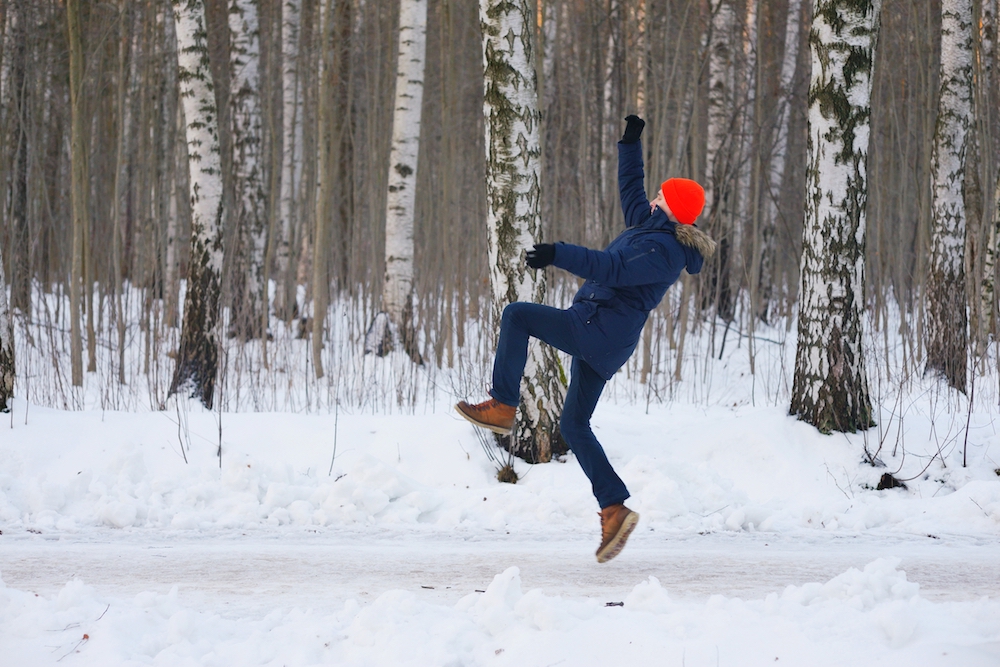Why Is Ice Slippery?

For those who live in colder climates, slippery ice defines winter: in skating rinks, on frozen ponds, and on dangerously slick roads and sidewalks.
But why is ice so slippery?
It turns out that scientists didn't really know the answer to that simple question until recently. But new research has shown that ice's slipperiness may be due to "extra" molecules on the surface of the ice. [The Mysterious Physics of 7 Everyday Things]
Old theories make no sense
Because ice is less dense than liquid water, its melting point is lowered under high pressures. A long-standing theory says that this is what causes ice to be slippery: As you step on it, the pressure of your weight causes the top layer to melt into water.
"I think everybody agrees that this cannot possibly be, " Mischa Bonn, director of the molecular spectroscopy department at the Max Planck Institute for Polymer Research in Germany, told Live Science. "The pressures would need to be so extreme, you can't even achieve it by putting an elephant on high heels."
Another theory says that the heat created by frictionwhen you move across the ice produces the layer of water. However, ice is not only slippery when you are moving, as anyone who tries to stand on ice skatesfor the first time quickly discovers.
Even if pressure or friction melted the ice, could a layer of water explain the slipperiness? Daniel Bonn, a physicist at the University of Amsterdam in the Netherlands, doesn't think so.
Get the world’s most fascinating discoveries delivered straight to your inbox.
"The water-layer theory doesn't make much sense," Bonn told Live Science. "If you spill some water on your kitchen floor, it becomes slippery but not very slippery ... Just a layer of water will not do it."
Loose molecules
Mischa and Daniel Bonn, who are brothers, published a paper May 9th in the Journal of Chemical Physicsdescribing the surface of ice. Rather than a layer of liquid wateron the surface of ice, they found, there were loose water molecules. Mischa Bonn compared it to a dance floor that is "filled with marbles or ball bearings." Slipping across the surface of the ice is simply "rolling" on these molecular marbles.
Ice has a very regular, neat crystal structure, where each water molecule in the crystal is attached to three others. The molecules on the surface, however, can only be attached to two others. Being so weakly bonded to the crystal allows these surface molecules to tumble, and attaching and detaching themselves to various sites on the crystal as they move.
Even though slipping on iceis caused by essentially rolling over these water molecules, this layer of molecules is not the same as a layer of liquid water. These molecules and the slipperiness exist at temperatures far below water’s freezing point. In fact, the way these molecules move so freely and diffuse across the surface actually makes them look more like a gas, Daniel Bonn said.
"For me, it's a gas — a two-dimensional gas rather than a three-dimensional liquid," he told Live Science.
But if ice is slippery because of loose surface molecules, is ice uniquely slippery? Not really, said Martin Truffer, a physics professor at the University of Alaska Fairbanks. It is not so much the nature of ice that is unique but rather our relation to it, he said.
"What's unusual about ice is, we usually encounter it so close to the melting point, " Truffer told Live Science. "It's really the only material where we have the gas phase, the liquid phase and the solid phase within the normal climate range that we live in."
Truffer, who lives in Fairbanks, Alaska, has experienced ice very far from the melting point: When it gets to minus 40 degrees Fahrenheit (minus 40 degrees Celsius), he said, the snow "becomes like sandpaper." Truffer's observation lines up with what the Bonns found. At ultralow temperatures, the molecules on the surface don't have as much energy to break and create bonds as they roll around, so the ice becomes nonslippery.
The temperature for maximum slipperiness, according to their research data, is around 19 degrees F (minus 7 degrees C).
But some people already knew that; it's the temperature most indoorspeed-skating rinks have been using for years.
Original article on Live Science.


